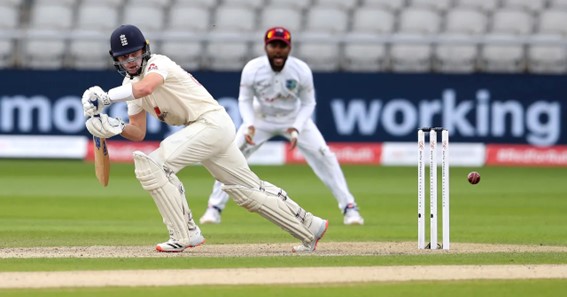Are you curious to know what is bowling strike rate? You have come to the right place as I am going to tell you everything about bowling strike rate in a very simple explanation. Without further discussion let’s begin to know what is bowling strike rate?
Cricket, often dubbed the “gentleman’s game,” is a sport that involves complex strategies, intricate skills, and intense competition between bat and ball. Among the various statistics used to assess a bowler’s performance, the “Bowling Strike Rate” stands out as a crucial metric that measures a bowler’s effectiveness in taking wickets. In this blog post, we’ll explore the concept of Bowling Strike Rate, understand its calculation, and delve into its significance in evaluating the prowess of bowlers on the cricket field.
What Is Bowling Strike Rate?
Bowling Strike Rate, also known simply as “Strike Rate,” is a statistical measure used in cricket to gauge the frequency at which a bowler takes wickets. It is defined as the average number of balls bowled by a bowler for each wicket taken. A lower strike rate indicates a bowler’s ability to break through the opposition’s batting lineup more quickly.
Calculating Bowling Strike Rate
The formula to calculate Bowling Strike Rate is relatively straightforward:
Bowling Strike Rate = Total Balls Bowled / Total Wickets Taken
For example, if a bowler has bowled 600 balls and has taken 30 wickets, their Bowling Strike Rate would be:
Bowling Strike Rate = 600 balls / 30 wickets = 20
Interpreting Bowling Strike Rate
A low Bowling Strike Rate is generally considered desirable, as it suggests that the bowler is effective in dismissing batsmen at a relatively quick pace. A high strike rate, on the other hand, may indicate that the bowler is finding it challenging to break partnerships and take wickets consistently.
Significance Of Bowling Strike Rate
- Wicket-Taking Ability: Bowling Strike Rate is a direct measure of a bowler’s ability to take wickets. A low strike rate indicates that the bowler has a knack for getting crucial breakthroughs.
- Impact on Matches: Bowlers with a low strike rate can turn the tide of a match by dismissing key opposition players quickly, thereby destabilizing the batting order.
- Team Strategy: Bowling Strike Rate influences team strategy, with bowlers who consistently take wickets at a fast pace often being used during crucial phases of a game.
- Comparison Among Bowlers: Bowling Strike Rate allows comparisons between different bowlers, helping identify those who excel in taking wickets under pressure.
- Evaluation of Bowling Performance: Along with other statistics like economy rate and average, Bowling Strike Rate provides a comprehensive picture of a bowler’s performance and contribution to the team.
Limitations And Considerations
While Bowling Strike Rate is an important statistic, it doesn’t provide the full context of a bowler’s performance. Factors such as pitch conditions, opponent quality, and the role a bowler plays within the team also influence the metric. Additionally, fast bowlers and spinners may have different typical strike rates due to their varying styles and roles.
Conclusion
In the dynamic world of cricket, Bowling Strike Rate serves as a window into a bowler’s ability to make an impact on the game by taking wickets. It’s a key statistic that not only reflects a bowler’s skill and effectiveness but also shapes team strategies and influences match outcomes. By understanding Bowling Strike Rate, fans, players, and analysts gain deeper insights into the artistry of bowling and the crucial role it plays in the sport’s narrative of skill, strategy, and competition.
FAQ
What Is Meant By Bowling Strike Rate?
Bowling strike rate is defined for a bowler as the average number of balls bowled per wicket taken. The lower the strike rate, the more effective a bowler is at taking wickets quickly.
How Do You Calculate A Bowling Strike Rate?
Bowling Strike Rate = Balls Bowled / Wickets Taken
To calculate your bowling strike rate, divide the number of balls bowled by the total number of wickets taken.
What Is The Difference Between Strike Rate And Run Rate?
To calculate batting strike rate in cricket: Divide the number of runs scored by balls faced by the batter. Multiply the resultant by 100 . The product is the strike rate for the batter.
What Is A 600 Strike Rate?
So if a batter has a strike rate of 600 in an innings, it means that he has scored the maximum runs possible with the bat on the balls that he has faced. Strike rate of 600 is generally seen more in T10 and T20 cricket.
I Have Covered All The Following Queries And Topics In The Above Article
What Is Bowling Strike Rate
What Is Strike Rate In Bowling
What Is Bowling Strike Rate In Cricket
What Is The Meaning Of Bowling Strike Rate
What Is Bowling Average And Strike Rate
What Is Strike Rate In Cricket Bowling
What Is Average And Strike Rate In Bowling
What Is A Good Bowling Strike Rate In Cricket
What Is A Bowling Strike Rate
What Is Meant By Bowling Strike Rate
What Is Bowling Strike Rate
What does bowling average means

